Yarilo (Jarilo): Slavic God Of Spring, Powerful Sexual Energy, Symbol Of Dying, Regeneration And Abundance
A.Sutherland - AncientPages.com - Jarilo was an important Slavic deity of spring, fertility, sowing of seed, dying and regeneration, and symbol of high sexual energy, sexual attraction, and passion in all living beings.
Yarilo by Andrey Shishkin - CC BY
In ancient beliefs, he was the lost son of the Slavic god of thunder, Perun. He was stolen from his father and taken to the world of the dead, where he was adopted and raised by Veles, Perun's enemy.
This Slavic deity played an important role in the dawn of Christianity, where Jarilo was the Slavic version of a Dionysos-like god of youth, and spring wearing a crown of flowers, and even Balder, a symbol of the dying and later resurrected god of fertility.
Jarilo was believed to stimulate reproduction taking place in nature, but this influence was extended only to inhabitants of their realm – Yav.
The world of Yav was 4-dimensional and contained people and other living beings. In ancient beliefs of the Slavs, Yav was the world surrounding us, and inside it, there were suns, stars, and solar systems. There were also celestial objects invisible to our senses.
Young Beautiful Man On A White Horse
Jarilo (Yarylo, Jarylo or Gerovit) was portrayed as a beautiful, barefoot young man wearing a long white robe. His head is crowned with a wreath of flowers and he moves around the world on a white horse.
He is seen holding a bunch of wheat ears in his left hand and a skull in his right.
High temples in honor of Yarilo were settled on the top of hills covered with trees. He was widely honored as a patron of all living things but without sacrifices.
The tops of the hills were cleared of vegetation and an idol was erected at this place, in front of which a large white stone was installed, which sometimes could be found at the foot of the hill.
Unlike most other gods, there were no sacrifices in honor of the god of spring. Usually Jarilo was worshiped by songs and dances in the temple. Each year, there were also organized spring festivals dedicated to this warmly welcomed god.
One of the participants was usually dressed up like the god Jarilo himself, and then this person became the center of the whole celebration. Sometimes special figures were made in the image of various people and brought to the temples. Then they were smashed against a white stone installed there.
It is believed it symbolized the blessing of Jarilo from which, both the harvest will be greater and the sexual energy higher.
All of these spring festivals, taking place in late spring or early summer, were basically alike. On a special day, processions of villagers would go around for a walk in the country or through villages.
Something or someone was identified to be Jarilo. a doll made of straw, a man or a child adorned with green branches, or a girl dressed like a man, riding on a horse.
Certain songs were sung which alluded to Jarilo's greatness and power, and his return from a distant land across the sea.
He was always greeted as a bringer of spring sunlight and abundance.
Written by – A. Sutherland - AncientPages.com Senior Staff Writer
Copyright © AncientPages.com All rights reserved. This material may not be published, broadcast, rewritten or redistributed in whole or part without the express written permission of AncientPages.com
More From Ancient Pages
-
 Centuries-Old Authorship Mystery – Solved By Stanford Musicologist Jesse Rodin
Archaeology | Jul 18, 2022
Centuries-Old Authorship Mystery – Solved By Stanford Musicologist Jesse Rodin
Archaeology | Jul 18, 2022 -
 Ancient Petroglyph Code Cracked By Archaeological Explorers
News | Apr 10, 2020
Ancient Petroglyph Code Cracked By Archaeological Explorers
News | Apr 10, 2020 -
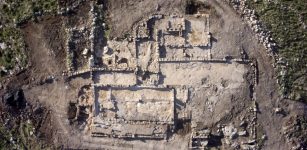 Impressive 2,700-Year-Old Farmhouse And 1,500-Year-Old Monastery Uncovered In Rosh Ha-‘Ayin
Archaeology | Dec 30, 2015
Impressive 2,700-Year-Old Farmhouse And 1,500-Year-Old Monastery Uncovered In Rosh Ha-‘Ayin
Archaeology | Dec 30, 2015 -
 Submerged Ancient Bridge Found In Genovesa Cave Reveals Humans Settled In Mediterranean Much Earlier Than Previously Thought
Archaeology | Sep 2, 2024
Submerged Ancient Bridge Found In Genovesa Cave Reveals Humans Settled In Mediterranean Much Earlier Than Previously Thought
Archaeology | Sep 2, 2024 -
 On This Day In History: Franco-Mexican War – Mexico City Captured By French Troops – On June 7, 1863
News | Jun 7, 2016
On This Day In History: Franco-Mexican War – Mexico City Captured By French Troops – On June 7, 1863
News | Jun 7, 2016 -
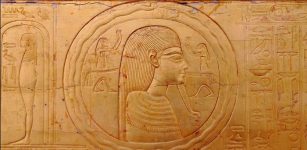 Ouroboros: Ancient Infinity Symbol Used By Different Ancient Civilizations
Ancient Symbols | Oct 3, 2017
Ouroboros: Ancient Infinity Symbol Used By Different Ancient Civilizations
Ancient Symbols | Oct 3, 2017 -
 Countess Loretta Of Sponheim Kidnapped Archbishop Of Trier And Got Away With It
Featured Stories | Sep 26, 2018
Countess Loretta Of Sponheim Kidnapped Archbishop Of Trier And Got Away With It
Featured Stories | Sep 26, 2018 -
 Flower Of Life: Ancient Sacred Geometry Symbol And Blueprint Of The Universe
Ancient Symbols | Oct 8, 2017
Flower Of Life: Ancient Sacred Geometry Symbol And Blueprint Of The Universe
Ancient Symbols | Oct 8, 2017 -
 Rare Bronze Age Sacrificial Offerings, Including A Bent Sword Found In A Bog Near Veksø, Denmark
Archaeology | Dec 3, 2024
Rare Bronze Age Sacrificial Offerings, Including A Bent Sword Found In A Bog Near Veksø, Denmark
Archaeology | Dec 3, 2024 -
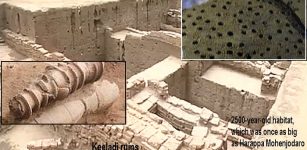 Keeladi Excavations Reveal Unique 2,000-Year-Old Terracotta Pipelines, Open Water Channel
Archaeology | Oct 30, 2019
Keeladi Excavations Reveal Unique 2,000-Year-Old Terracotta Pipelines, Open Water Channel
Archaeology | Oct 30, 2019 -
 Unexplained Mystery Of Secret Knowledge And Extraordinary Sightings Hidden In An Author’s Book
Featured Stories | Nov 25, 2021
Unexplained Mystery Of Secret Knowledge And Extraordinary Sightings Hidden In An Author’s Book
Featured Stories | Nov 25, 2021 -
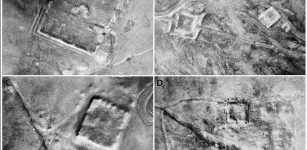 Hundreds Of Undiscovered Roman Forts Revealed By Spy Satellites
Archaeology | Oct 27, 2023
Hundreds Of Undiscovered Roman Forts Revealed By Spy Satellites
Archaeology | Oct 27, 2023 -
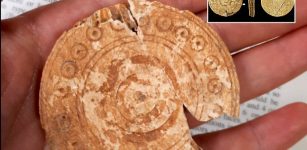 A Large ‘Tableman’ Sheds Some Light On People’s Fun And Games In Medieval Bedfordshire
Archaeology | Jun 19, 2023
A Large ‘Tableman’ Sheds Some Light On People’s Fun And Games In Medieval Bedfordshire
Archaeology | Jun 19, 2023 -
 Puzzling Ancient Artifacts Of Unknown Origin And Purpose
Artifacts | Mar 10, 2014
Puzzling Ancient Artifacts Of Unknown Origin And Purpose
Artifacts | Mar 10, 2014 -
 Mystery Of The Lost Beverina Castle – Did Knights Templar Know Where It Was?
Ancient Mysteries | Jan 21, 2018
Mystery Of The Lost Beverina Castle – Did Knights Templar Know Where It Was?
Ancient Mysteries | Jan 21, 2018 -
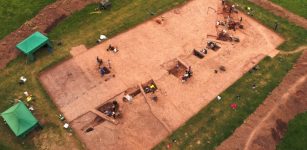 Remarkable Complex Of Early Neolithic Monuments Discovered In Herefordshire, England
Archaeology | Jul 21, 2023
Remarkable Complex Of Early Neolithic Monuments Discovered In Herefordshire, England
Archaeology | Jul 21, 2023 -
 On This Day In History: The Battle Of Actium Took Place On Sep 2, 31 BC
News | Sep 2, 2016
On This Day In History: The Battle Of Actium Took Place On Sep 2, 31 BC
News | Sep 2, 2016 -
 Unexplained Phenomenon In Ancient Ireland – When Legends, Science And Real Events Collide
Ancient Mysteries | Apr 19, 2018
Unexplained Phenomenon In Ancient Ireland – When Legends, Science And Real Events Collide
Ancient Mysteries | Apr 19, 2018 -
 Strange Tale How The Liberty Cap Mushroom Got Its Name Starts In Ancient Rome
Featured Stories | Sep 3, 2023
Strange Tale How The Liberty Cap Mushroom Got Its Name Starts In Ancient Rome
Featured Stories | Sep 3, 2023 -
 Most Important Road In Scottish History Found In The Garden Of The Old Inn Cottage Near Stirling
Archaeology | Nov 16, 2023
Most Important Road In Scottish History Found In The Garden Of The Old Inn Cottage Near Stirling
Archaeology | Nov 16, 2023

